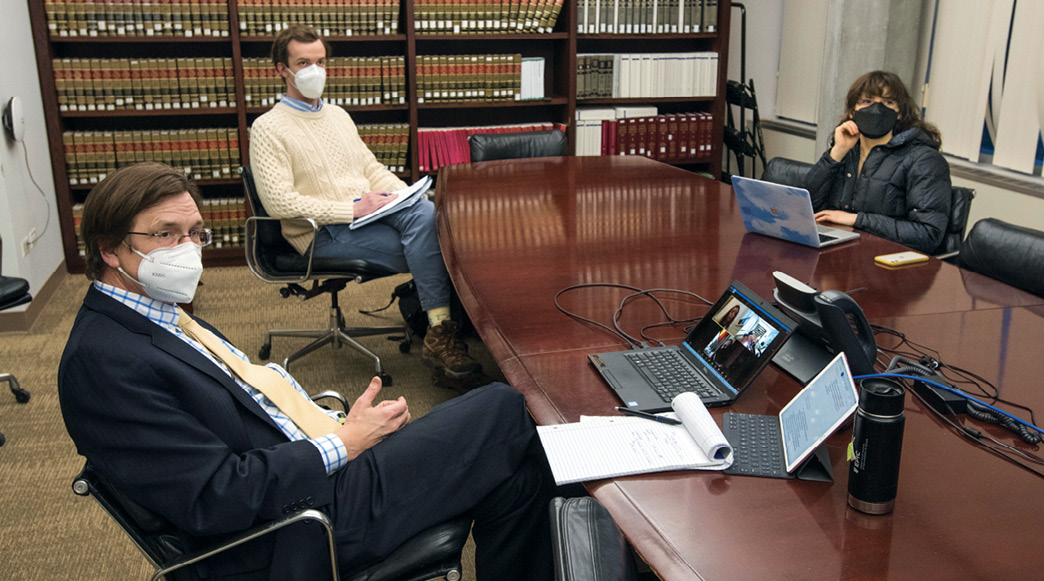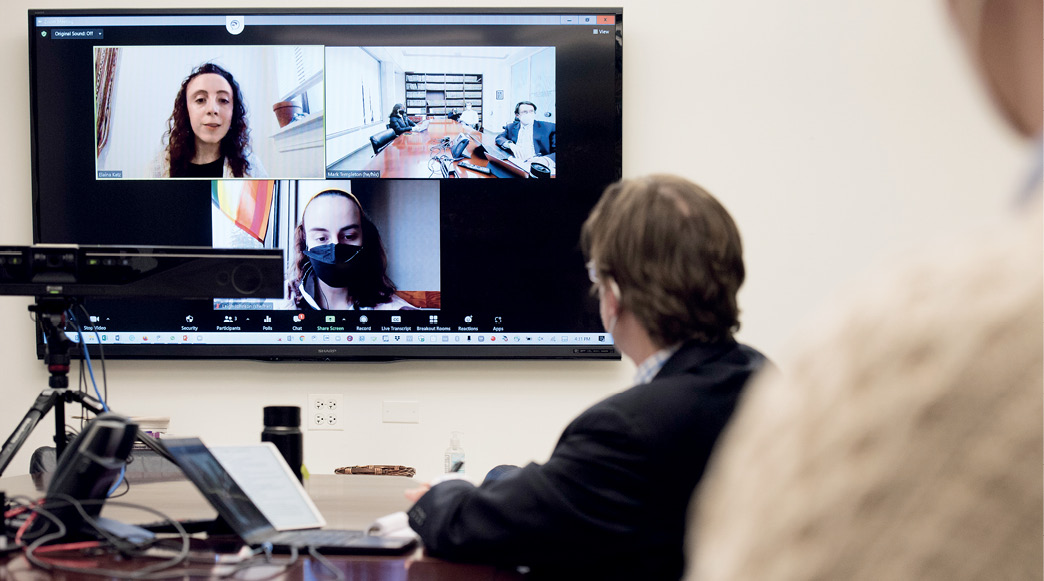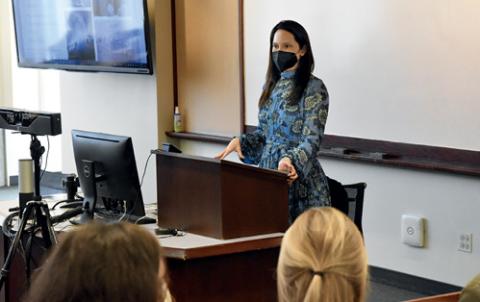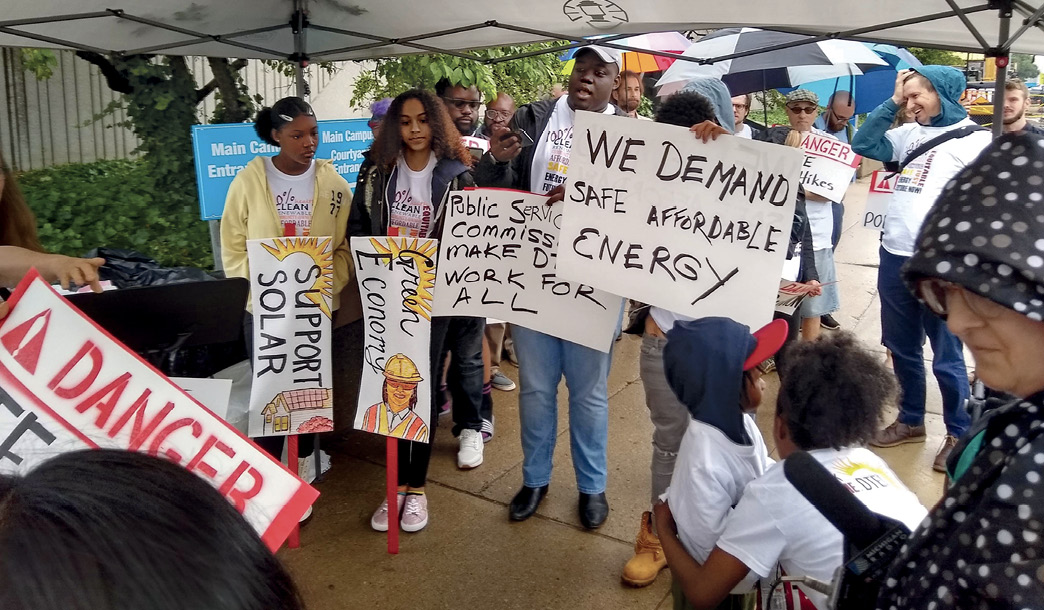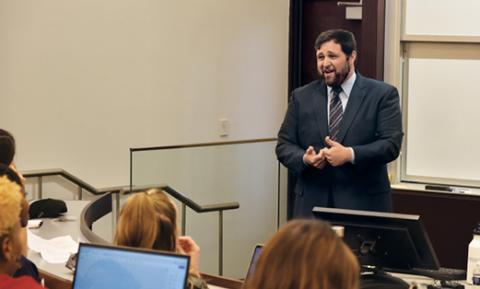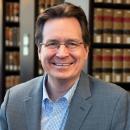“There Is No Environmental Law without Environmental Justice”
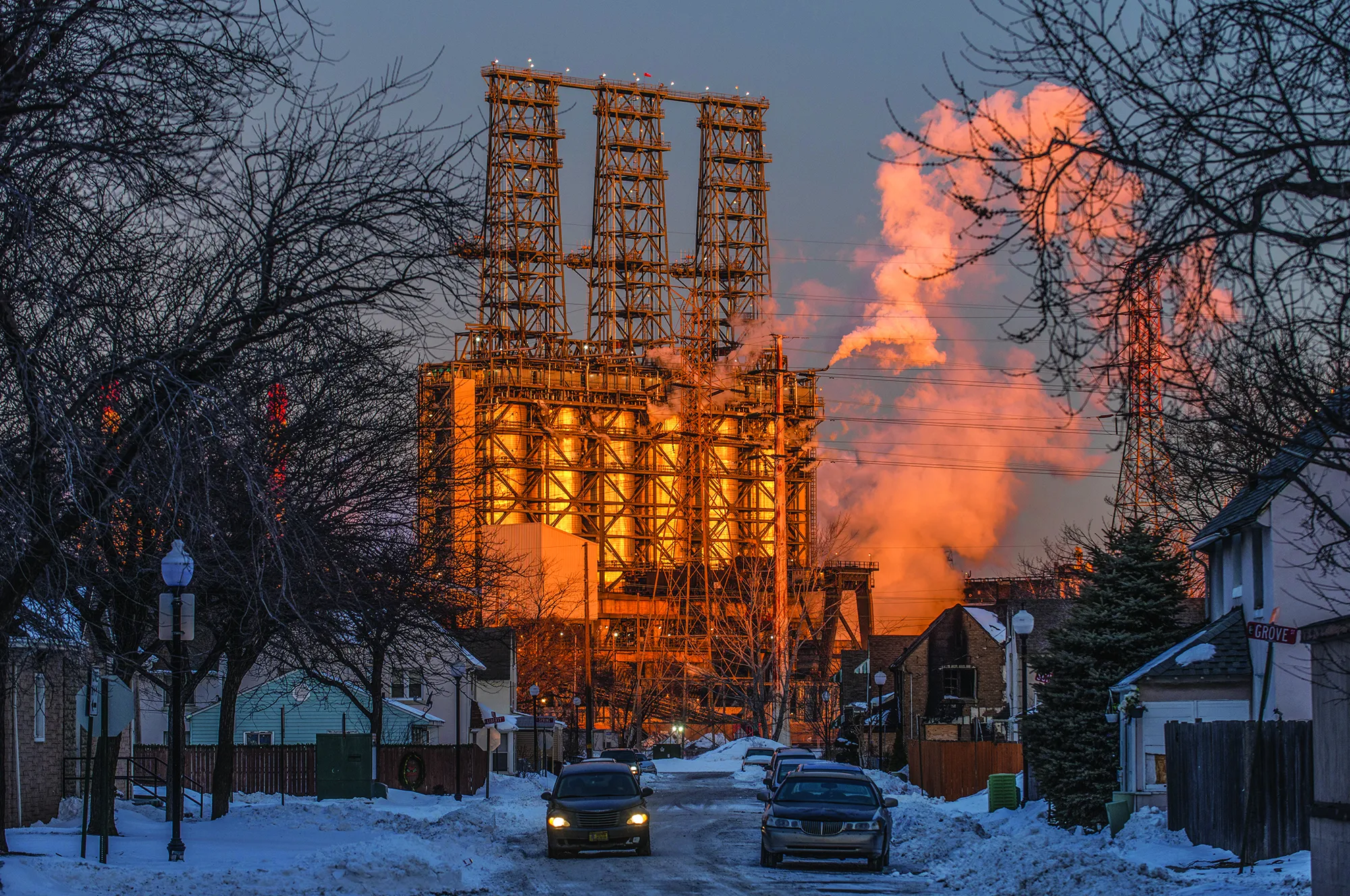
In 2016, the Abrams Environmental Law Clinic began working with East Chicago, Indiana, residents in their fight for a safe cleanup of the soil contamination that has harmed the area for decades. In a different project, the clinic represents Soulardarity, a nonprofit that helps residents in the Detroit area launch their own solar energy projects, advocate for reliable electricity service, and more.
On the surface, these two projects are very different. One involves solar power and electricity; the other addresses land contamination. The work in Detroit supports a nonprofit organization; in East Chicago, the clinic represents concerned citizens living in an area that has long been part of the Environmental Protection Agency’s Superfund program, which cleans up contaminated sites. What they have in common, though, is a focus on equity in environmental protection—a focus that marks the Abrams Clinic as a leader of a larger movement within the field.
In East Chicago and Detroit, the Abrams Clinic is advocating for communities that are particularly vulnerable to environmental harms and that often don’t have a voice in the conversations that affect them most.
“These are communities that have historically been underserved,” said Clinical Professor Mark Templeton, director of the Abrams Clinic. “And they are rightfully entitled to be treated more equitably. We’ve got to confront that and ask, ‘How are the systems set up that perpetuate this?’”
There has been a notion, Templeton said, that environmental law clinics can either focus on environmental justice or another area of environmental law—but he doesn’t see it that way. These different facets of environmental law are so intertwined that it cannot be one or the other, he said.
Templeton offered the pressing issue of climate change as an example: the work with Soulardarity advocates for renewable energy, thereby reducing the demand for coal-fired power plants and natural gas plants. The East Chicago project is also shaped by the changing climate; higher water levels in Lake Michigan lead to higher groundwater levels in Northwest Indiana, which can increase the spread of contamination and expose more individuals to toxic chemicals in East Chicago.
“The cutting edge is to be able to combine both,” Templeton said. “That can be done—and that’s actually what we have been doing.”
Taking on these projects has involved building long-term relationships with the communities they represent, learning their experiences and concerns, and addressing a wide variety of issues over the years, he added.
“We’re broadening the scope of our work,” Templeton said. “What we’re doing is consistent with what others at the forefront of the legal community working in the environmental justice movement are doing, which is that we’re invested in the community. We’re not just here to deal with one emergency issue or one case and then move on. We are addressing a fuller range of environmental and public health challenges faced by these communities.”
The Projects in East Chicago and Michigan
For the last 10 years, the Abrams Clinic has worked on some of the most pressing environmental law issues in Chicago and across the Great Lakes region. The clinic has addressed everything from endangered species protection, to clean air and water, to the social cost of greenhouse gas emissions, and much more—all while offering students invaluable hands-on experience with environmental law policies and procedures.
When Templeton joined the Law School as the founding director of the Abrams Clinic in 2012, he arrived with a longstanding interest in environmental justice. In 2009, as the cabinet-level director of the Missouri Department of Natural Resources, he created a team to address environmental justice issues throughout the state. At the Law School, Templeton found there was a great deal of student interest in tackling environmental justice issues as well.
“We have been involved in this work for over five years with both Soulardarity and East Chicago,” Templeton said. “There are many students who have an interest in this type of social justice work, as you can see from the Law School clinics more generally. But people have not always known that you could do this work in the environmental space.”
In 2016, the East Chicago Housing Authority notified residents of a public housing complex in the city that testing had revealed high levels of lead in the soils in the neighborhood, and that residents needed move out in 30 days. The city had been home to the US Smelter and Lead Refinery Inc., which closed in 1985 but left behind contaminants that have caused health issues for nearby residents for decades. The move-out mandate also placed a significant financial strain on the low-income community, adding urgency to the need for a safe cleanup of the toxic chemicals in the soil. The Abrams Clinic and a coalition of other law clinics, nonprofit legal organizations, and law firms offering pro bono help began representing these residents shortly after the mandate was issued.
Working on the project, students in the clinic researched zoning and public health laws and dissected the EPA’s various actions and statements over the years. They also took time to understand exactly what the residents were hoping to achieve, said Colin Parts, ’20, who worked on the East Chicago project both as an undergraduate and as a law student.
“In sitting down with the residents, the primary concern was safe cleanup,” said Parts, who received a Kisco Cares Public Interest Fellowship from the Law School to pursue interests in environmental law after graduation and is now a staff attorney at the State Energy and Environmental Impact Center at NYU School of Law. “That broke down into a lot of different things. We wanted the EPA to explain clearly why they were making decisions about how many feet they should dig down. We wanted to understand what risks were posed by specific lead or arsenic levels in the soil. When the EPA proposed to stabilize the arsenic using a particular injection method, we wanted to understand why they chose that method as opposed to anything else. And if we didn’t think it was safe, we wanted them to choose a different method.”
Achieving the broad goal of safe cleanup meant the clinic had to be creative in determining the best legal route, said Emma Sperry, ’21, who worked both with the East Chicago residents and with Soulardarity and is now a Kisco Cares public interest legal fellow at the Idaho Conservation League.
“We had to think about the avenues of getting to that goal,” Sperry said of the East Chicago work. “How do we engage with the EPA to improve their cleanup? Is it a comment? Is it reaching out directly? Is it working with the city? We really had to think outside the box.”
By contrast, the Soulardarity work focused on more specific goals and strategies. Clinic students were advocating for more community solar power projects and reliable energy service, often by appearing before the Michigan Public Service Commission, the government entity that regulates investor-owned utilities like eastern Michigan’s electricity provider, DTE.
“With Soulardarity, we had this really specific goal—we wanted community solar power,” Sperry said. “And we also had a really specific avenue for getting that goal, which was going in front of the public utilities commission and getting them to issue an order that gives us what we want. But, although there was a specific avenue and goal, we still had to think about what legal arguments we could use to get at that goal.”
Leah Song, ’19, also worked with Soulardarity as a student in the Abrams Clinic. For her, being able to work on environmental justice projects as a law student was extremely important.
“I practiced environmental law at a firm for several years [after law school], and what was missing for me was that [environmental justice] focus,” said Song, who is now an environmental law fellow at Northwestern University Pritzker School of Law. Her work has come full circle: at Northwestern, she collaborates with the Abrams Clinic on the East Chicago project.
“I think it is so fulfilling being able to connect with the community,” Song said. “And to make sure that the community is being treated fairly—especially as a woman of color, it was really important for me to be doing environmental justice work.”
Cutting Edge Environmental Legal Work
In the summer of 2021, the Abrams Clinic’s work in Detroit expanded to western Michigan, where they are working with a collective of social service organizations to secure reliable, sustainable energy for the next decade. Losing access to reliable energy can be especially detrimental for low-income individuals, Templeton said. For instance, they may not have the resources to replace food or medications after a power outage.
“We now are promoting energy justice and energy democracy throughout the entire state of Michigan,” Templeton said. “We’re promoting community solar as a solution to bring renewable energy to these low-income and people-of-color communities so they have more control over their energy.”
What makes this work unique is that rather than advocating for individual clients, the clinic is pushing for systemic changes, added Robert Weinstock, who is an assistant clinical professor in the Abrams Clinic.
“We’re working with a community organization, but we are advocating for broad changes to the way that the [Michigan Public Service] Commission works, and the way that the electricity system works in Michigan,” Weinstock said. “And that’s different from what other clinics might be doing in more of a direct-services model.”
With both the East Chicago and Michigan projects, the clinic often works with volunteers who may also have full-time jobs. Moreover, they are representing the people whose lives are directly impacted by environmental injustices.
“One of the most profound experiences I had in the Abrams Clinic was working with these environmental justice communities,” Sperry said. “Before I worked in the clinic, I saw environmental work more as recycling and clean air. Working in East Chicago, I saw a woman whose child had an illness that we knew was caused by an environmental harm. That was at the forefront. It definitely had an impact on my career choice.”
Working with clients who have dealt firsthand with these environmental issues is a critical experience for students, Templeton added.
“It’s important for students who are interested in social justice issues for it not to be theoretical,” he said. “It’s important for it to be real, and for them to confront what these people’s lived experiences are actually like.”
Working on these projects, students have encountered the systems that perpetuate these environmental harms, Templeton said. Working with Soulardarity, they learned about the power outages and dangerous downed power lines that have long plagued low-income residents in the Detroit area. In East Chicago, they found that the industrial facilities that produced pollution and contamination were generally located in the same areas, affecting the same neighborhoods.
“There’s a long history of racism and classism associated with where these developments are taking place,” Templeton said. “Zoning laws and siting practices have led to the intentional placement of polluting facilities in many Black and Brown communities.”
Uplifting Community Voices
In both of these projects, bringing the voices of community members to legal proceedings was a primary concern. Elevating these voices in environmental justice work is a theme that Song first encountered as a student in the Abrams Clinic.
“Uplifting community voices is something that has been a theme throughout all of my work,” Song said. “I think it’s really important when you’re working in the arena of environmental justice to make sure that you’re doing just that.”
Historically, regulators and industry have not given much consideration—if any—to the perspectives of low-income individuals, Templeton said. For example, when Consumers Energy in western Michigan held public meetings about their long-term plans, the company made little effort to make these meetings accessible to many of their customers.
“All of the meetings were held between 1 and 3 in the afternoon,” Templeton said. “There are a lot of people who are just not able to take off of work in the middle of the day. Moreover, I don’t think there were any translation services or childcare provided that would have made it easier for all kinds of customers to attend.”
Since the Abrams Clinic began working with Soulardarity, DTE has provided funding in support of three community solar projects in the Detroit area and has set up a low-income solar advisory board. Another major achievement, Weinstock said, was bringing the testimony of a low-income DTE customer to a Michigan Public Service Commission proceeding, something that hadn’t been done before.
“The testimony came from one of the members of Soulardarity who was a customer in Highland Park,” he said. “Bringing her story directly to the commission was very powerful.”
Soulardarity’s Executive Director and Co-founder Jackson Koeppel said that working with the Abrams Clinic has helped them translate their broader goals into legal frameworks that can have a real impact. It has also given the organization a voice in formal legal proceedings surrounding solar power, energy reliability, and energy justice.
“It’s been critical that the clinic is here to help us with things like drafting letters, figuring out where they should go in, and giving us the information we need to know how to engage in these processes,” Koeppel said. “Because there’s this collaborative relationship where they know what we want and they know what our goals are, they can really help to do those quick turnaround things and keep us in a process that otherwise, just capacity-wise, we would be falling out of.”
A crucial first step in elevating the voices of their clients in East Chicago, Parts said, was engaging in productive dialogue with their clients and really learning to listen.
“I learned a lot about working with people who are on the front line through Mark’s mentorship,” Parts said. “I cannot say enough about how great he was at carefully leading me and the other members of the team in engaging in respectful, productive dialogue with the community members in order to understand their needs and interests. That was a formative part of my legal education and it’s something that I’ve carried with me going forward.”
When the EPA proposed a method of stabilizing the arsenic in East Chicago in 2017, a primary concern for residents was whether the method was safe and effective, Parts said. After doing extensive research and communicating with the EPA, students didn’t believe it was the safest method. In some cases, they found, the arsenic could be moved by the groundwater into people’s basements, then sump pumps would move the contaminated water into their yards and vegetable gardens.
“There were a lot of concerns there,” Parts said. “And basically, we presented the question of whether it would be best to contribute through public comments, whether we could attempt to file a lawsuit, or whether there were methods outside of the two of those. It was doing a lot of the background and then being as transparent and clear as we could about the factors we were considering.”
The Client and Student Experiences
A benefit of working with the communities in East Chicago and Michigan long term is the positive client-attorney relationships that they’ve built over the years. They’ve been able to develop a familiarity with their clients’ interests and concerns, as well as a strong sense of pride in their accomplishments and growth, Weinstock said.
“We can work much more hand-in-glove with them, because we have experience with what they want, what they care about, and where they want to focus,” Weinstock said. “It also means that we can react much more quickly when something comes up.”
Another benefit, Templeton said, is their clients’ comfort with and appreciation for working with students.
“It is really wonderful to have clients who want to work with us over and over again,” he said. “And who really believe in the importance of the student role—who enjoy working with students and are excited work with students.”
Lori Locklear, who is a member of the East Chicago Calumet Coalition – Community Advisory Group, expressed gratitude for the Abrams Clinic’s legal support and expertise, and their enthusiasm for the cause.
“I will forever be grateful for the work and support the students and professors at the Abrams Environmental Law Clinic have [provided] and continue to provide the community of East Chicago, Indiana,” Locklear said. “They have provided an invaluable service to the [residents]. They are always enthusiastic about our environmental justice cause and strive to provide us with informative information. We could not have done it without their support and knowledge.”
During the years the Abrams Clinic has worked in East Chicago and Michigan, six students have conducted cross-examinations of high-level utility executives. For Weinstock, watching students grow and accomplish so much during law school has been extremely rewarding.
“These sorts of cases provide incredible opportunities for our students,” Weinstock said. “To watch a student prepare for that sort of cross-examination, execute it, and do such a wonderful job brings me tremendous pride as a teacher.”
When Sperry worked on the Soulardarity project, she had to familiarize herself with Michigan’s complex utility laws and regulations—it was a process that felt a lot like learning a new language, she said. As a whole, her time in the Abrams Clinic gave her many of the practical skills she needed to be a lawyer, she said.
“Something that the clinic provides that you don’t necessarily get in the classroom is experience with the process side of being a lawyer,” Sperry said. “For example, we dealt with a large number of exhibits when we were bringing testimony for the utility proceedings. Just figuring out: How do you keep track of hundreds of exhibits? How do you make sure you get your testimony in before the deadline? You need to get everything in order so that you’re presenting quality work in the utility proceeding.”
Working with the East Chicago residents and Soulardarity, Sperry said, she realized that there is no environmental law without environmental justice.
“If we are not thinking about how our environmental laws and policies affect those who’ve been most harmed by environmental degradation in this country, we’re not really addressing the main issues,” Sperry said. “If you want to be an environmental lawyer, or really any kind of lawyer, you have to be thinking about how law and policies have and will continue to affect the people who are most likely to be harmed by the policy. Every law student should be thinking about how to solve these problems for low-income and minority populations.”
